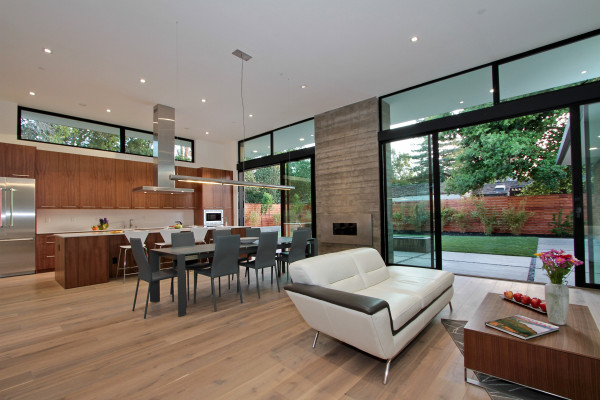These resources are from an archived version of our website. Want to see what we’ve been up to lately? Check out our new website.
High Performance Homes: Passive-Certified vs. Passive-Inspired
If you’re planning to build a custom home or renovate your current abode, you have an amazing opportunity to transform the way you live. There are an incredible array of energy-efficient home systems available today, and if you’re planning a new custom home, you should think high-performance from the start.
At present, there is no universal definition of a “high-performing home” in the construction industry. However, there is some consensus in the way the term is used. At Clarum, we believe high-performing homes incorporate the principles of passive home construction, including:
- Lighter environmental impact (smaller carbon footprint, eco-friendly materials, longevity of construction, reducing waste, recycling)
- Better experience for the homeowner (greater comfort, healthy air)
- Smaller bills, greater value (extreme energy efficiency; quality of design, materials, construction)
- Consumes fewer resources at construction and throughout its life.

There are a few industry methodologies for creating a high-performance environment, and the passive approach to home building has some unique advantages. Below, we’ve outlined the differences between passive-certified and passive-inspired homes, and the shared benefits of each approach to home building.
What Is a Passive-Certified Home?
To become a certified Passive home, a home must meet very specific standards set by the non-profit organization, Passive House Institute United States (PHIUS).
Unlike LEED and other “point accumulation” green building standards, Passive Home certification is based on actual performance results. To be Passive-Certified, your home must use less than 14 kWh per square foot for annual heating demand, and your total annual source energy cannot exceed 11 kWh per square foot. In addition, the building shell must be airtight with less than 0.6 air changes per hour at 50 pascals.
These energy efficiencies are met by employing a set of advanced building technologies to achieve extreme energy efficiency (they’re also available in Passive-Inspired home construction). A Passive-Certified home is one that employs a set of advanced building technologies to achieve extreme energy efficiency.
What is a Passive-Inspired Home?
Passive-inspired construction incorporates many if not all of the same building techniques and materials to achieve a Passive Home without the certification. This means that you can have a home with all of the same features, technology, and performance goals (or just some of them) while choosing not to pay for the extra costs and rigors of having third-party certification of your structure.
Benefits of Passive Construction
- Extreme Efficiency – Passive homes energy consumption is reduced by up to 90% compared to a conventionally-built home. Specialized equipment including high-performance windows and doors, super-insulation, an airtight building envelope, solar thermal systems and a Heat Recovery Ventilator (HRV) help minimize the loss of energy and optimize internal gains. There’s no need for a furnace or other conventional heating mechanism – any heat you generate indoors, whether from your own body or by running a hair dryer is all you need to heat your home. Imagine that!
- Total Comfort – The same technologies that create extreme efficiency in passive homes also help maintain even air temperatures throughout the house, and ensure that your home is extremely quiet. The passive home is a tranquil sanctuary with its nearly silent ventilation system (no blasts from vents), super-sealed joints, and maximized insulation.
- Indoor Air Quality – HRV systems coupled with passive home construction practices eliminate the chemicals and particulates that pollute a conventional home’s indoor air quality and negatively impact your short- and long-term health. Careful consideration of cabinetry, carpet, paint, glue, and calk material along with clean air entering your home ensures that your home is the healthiest it can be.
Passive home construction shouldn’t mean sacrificing quality, or aesthetic. High-performance design considerations and building science can be integrated into any style of architecture, and working with a passive-trained home builder will be quicker, easier, and less expensive than doing it on your own. Before the first shovelful of dirt is turned, be sure to sit down and communicate with your architect, builder, and suppliers to review the plans and ensure your new home meets all of your sustainability, efficiency, comfort, and air-quality goals. Live passive, live inspired!
Interested in learning more about Clarum’s approach to passive home construction? View our past projects, take a look at our High-Performance Home Building Guide, or call us at 650.322.7069.









Hello-
Im am looking to to build new. I saw one of your homes on Rhett Place in Danville. It seems like a very interesting concept. If I were to build Passive inspired, how would the price per square foot change? Have you calculated how long it takes to recoup the additional cost? I am looking to build in the 4-5,000 sqft range.
Aj